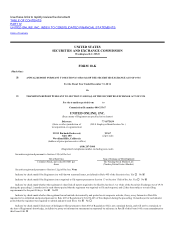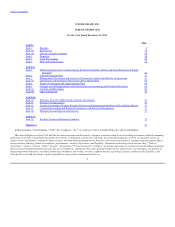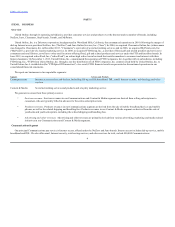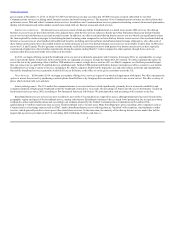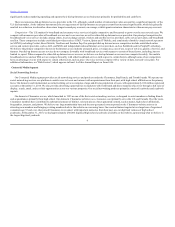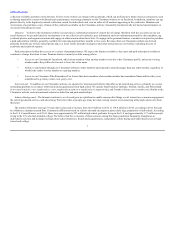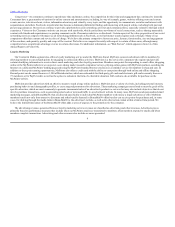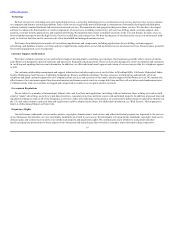Juno 2014 Annual Report Download - page 7
Download and view the complete annual report
Please find page 7 of the 2014 Juno annual report below. You can navigate through the pages in the report by either clicking on the pages listed below, or by using the keyword search tool below to find specific information within the annual report.
Table of Contents
significantly reduce marketing spending and operate their dial-up Internet access businesses primarily for profitability and cash flows.
There are numerous dial-up Internet access providers in the U.S., although a small number of national providers account for a significant majority of the
U.S. dial-up market. As the industry has matured, the average tenure of dial-up Internet access pay accounts has increased significantly, which has generally
resulted in a reduction in subscriber churn since longer tenured pay accounts, on average, exhibit greater retention characteristics than newer pay accounts.
—The U.S. market for broadband and consumer voice services is highly competitive and forecasted to grow over the next several years. We
compete with numerous providers of broadband services and voice services, as well as other dial-up Internet access providers. Our principal competitors for
broadband and voice services include, among others, local exchange carriers, wireless and satellite service providers, cable service providers, and broadband
resellers. These competitors include established providers such as AT&T, Verizon, Sprint and T-Mobile, and a multitude of mobile virtual network operators
(or MVNO), including Cricket, Boost Mobile, TracFone and Freedom Pop. Our principal dial-up Internet access competitors include established online
service and content providers, such as AOL and MSN, and independent national Internet service providers, such as EarthLink and its PeoplePC subsidiary.
We believe the primary competitive factors in the Internet access industry are speed, price, coverage area, ease of use, scope of services, quality of service, and
features. Our dial-up Internet access services do not compete favorably with broadband services with respect to certain of these factors, including, but not
limited to, speed. When compared to other dial-up Internet access services, we believe our dial-up Internet access services compete favorably. Our mobile
broadband service and our DSL service compete favorably with other broadband services with respect to certain factors, although some of our competitors
have an advantage over us with respect to certain other factors, such as price. Our voice services compete with a variety of data, text and voice plans. For
additional information, see "Risk Factors", which appears in Item 1A of this Annual Report on Form 10-K.
Social Networking Services
Our Content & Media segment provides social networking services and products under the Classmates, StayFriends, and Trombi brands. We operate our
social networking services as a platform to enable users to locate and interact with acquaintances from their past, with high school affiliations as the primary
focus. Our domestic and international social networking services comprise a large and diverse population of users, with approximately 100 million registered
accounts at December 31, 2014. We also provide advertising opportunities to marketers with both brand and direct response objectives through a full suite of
display, search, email, and text-link opportunities across our various properties. Our social networking products primarily consist of yearbooks and yearbook
reprints.
Our domestic Classmates service, which launched in 1995 as one of the first social networking services, is designed to assist members in finding friends
and acquaintances primarily from high school. Our domestic Classmates website () primarily serves the U.S. and Canada. Over the years,
Classmates members have contributed a substantial amount of distinct, relevant pieces of user-generated content, such as names, high school affiliations,
biographies, interests, and photos. We believe our large membership base and the user-generated content posted on the Classmates website assist us in
attracting new members and bringing existing members back to the website on a recurring basis. One content feature targeted at our large base of registered
consumers age 35 and over, who joined Classmates to reconnect with important memories from their past, are our digitized versions of high school
yearbooks. At December 31, 2014, we had approximately 280,000 digitized high school yearbooks available on the website, representing what we believe is
the largest digitized yearbook
6

